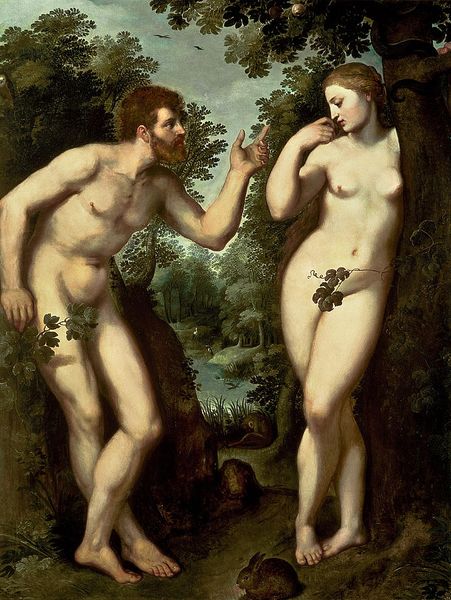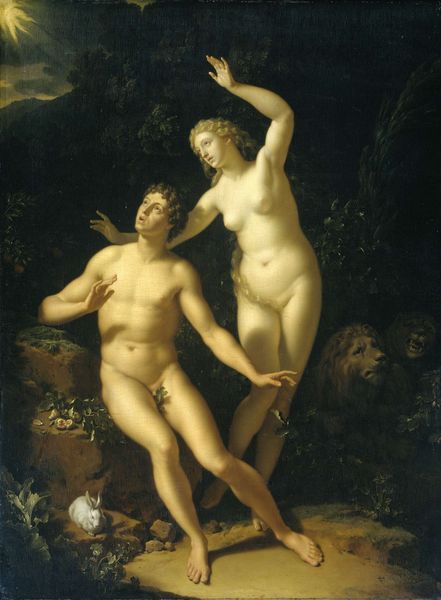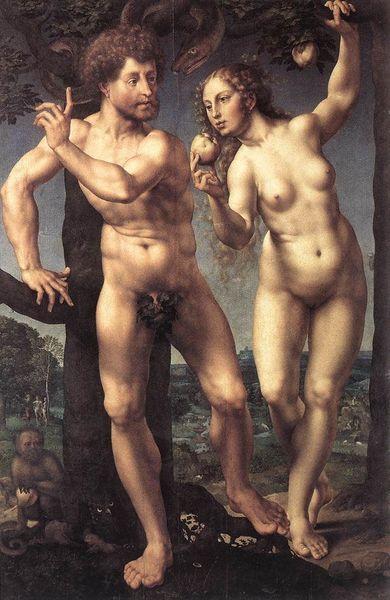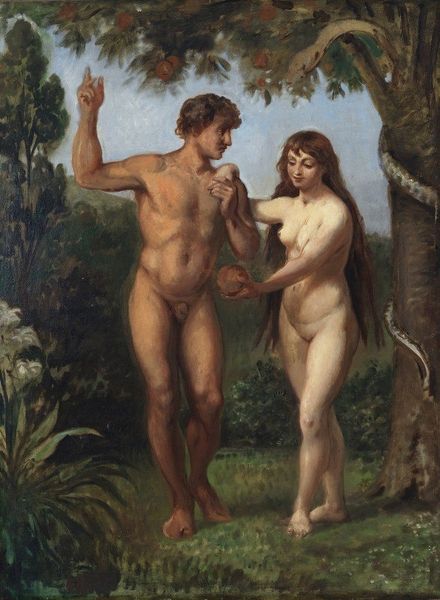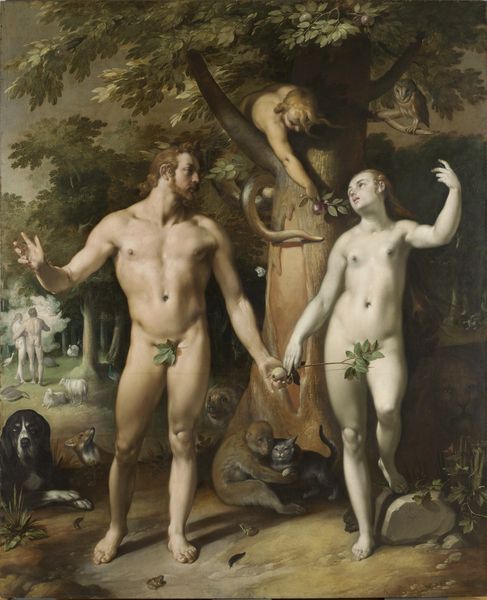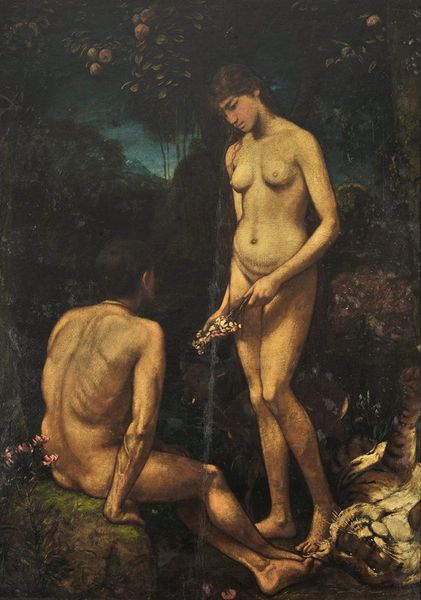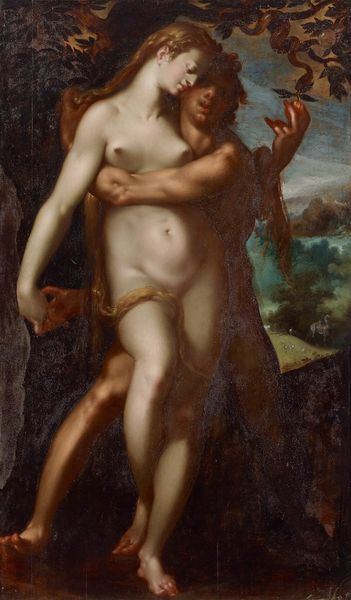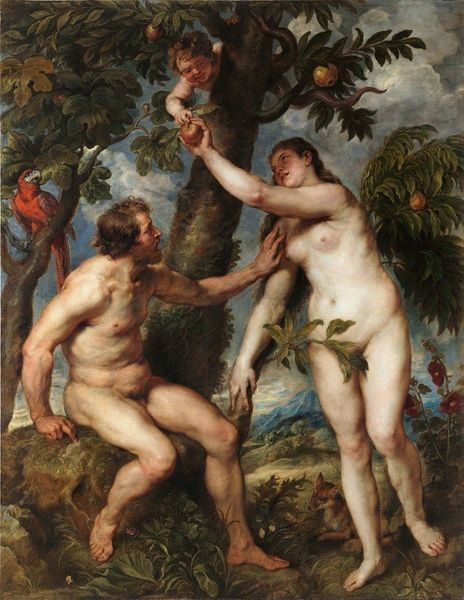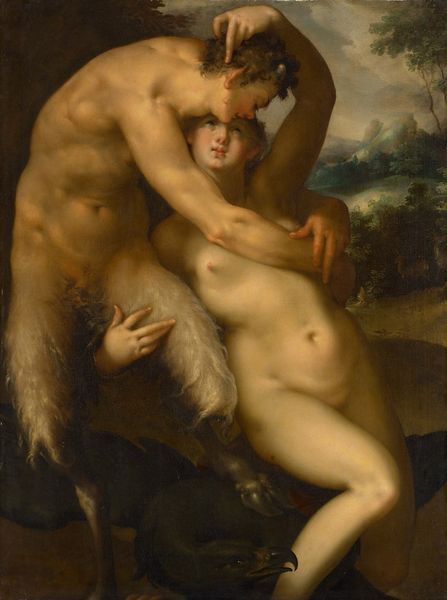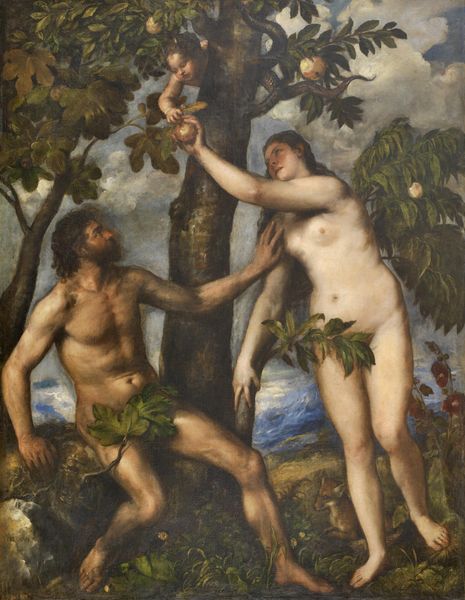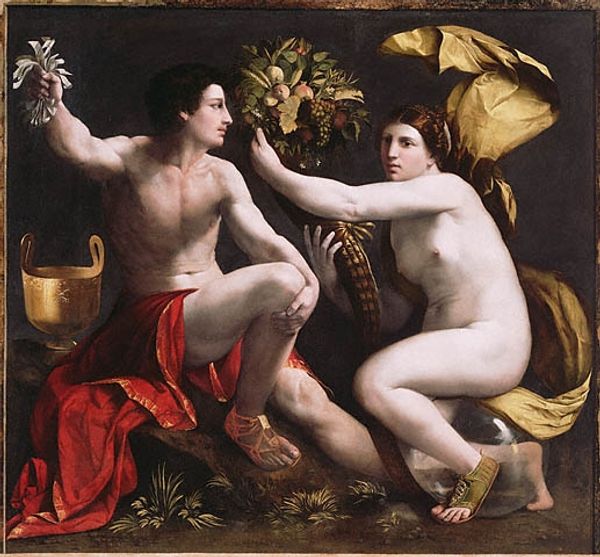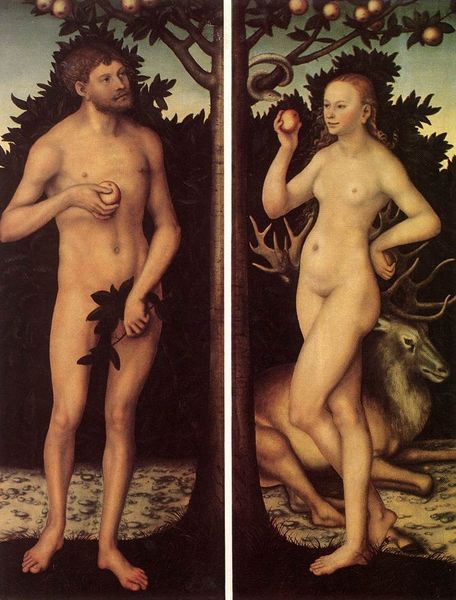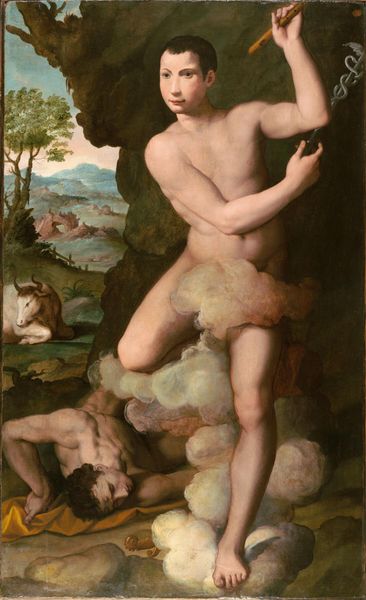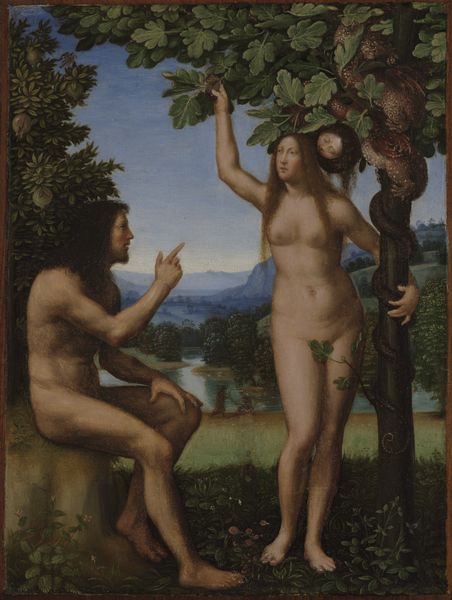
painting, oil-paint
#
portrait
#
baroque
#
painting
#
oil-paint
#
figuration
#
oil painting
#
mythology
#
human
#
painting painterly
#
history-painting
#
nude
Dimensions: 203.5 x 134 cm
Copyright: Public domain
Editor: Here we have Hendrick Goltzius's "Adam and Eve," painted in 1608 using oil paints. The figures are so prominent and lifelike. I'm curious, what social or historical currents do you see reflected in this particular depiction? Curator: It's a fascinating portrayal, isn’t it? Beyond the immediate biblical narrative, consider the power dynamics at play. The painting clearly places Eve in a position of active influence, offering the apple to Adam. In a patriarchal society, this subversion of traditional roles could be interpreted as a commentary on the shifting social landscape of the 17th century and, more broadly, questions surrounding female agency. Do you think her expression suggests agency, or is it more complex? Editor: I hadn’t thought of it that way. I guess I'd assumed it was the standard representation of temptation, but now I see that Eve's gaze does seem knowing, almost challenging. Is it also significant that they are rendered as northern European types, rather than generalized ideals? Curator: Absolutely. This particular 'Adam and Eve' speaks volumes about how cultural narratives can be manipulated and molded to support very specific societal and political ideologies. Their nudity isn't simply innocent, is about ideas concerning innocence, guilt, beauty and who gets to define those things. It also intersects with discourses on colonization and the body. How does it challenge or reinforce certain power structures inherent in the story? Editor: This painting really opens up a much bigger discussion. I had initially viewed the piece at face value, but understanding the socio-political undercurrents has enriched my perception immensely. Thanks! Curator: Likewise! It is a good opportunity to explore intersections and narratives often left untold, bringing new perspectives to the history of art and helping to promote a culture of equality, diversity, and social justice.
Comments
No comments
Be the first to comment and join the conversation on the ultimate creative platform.
